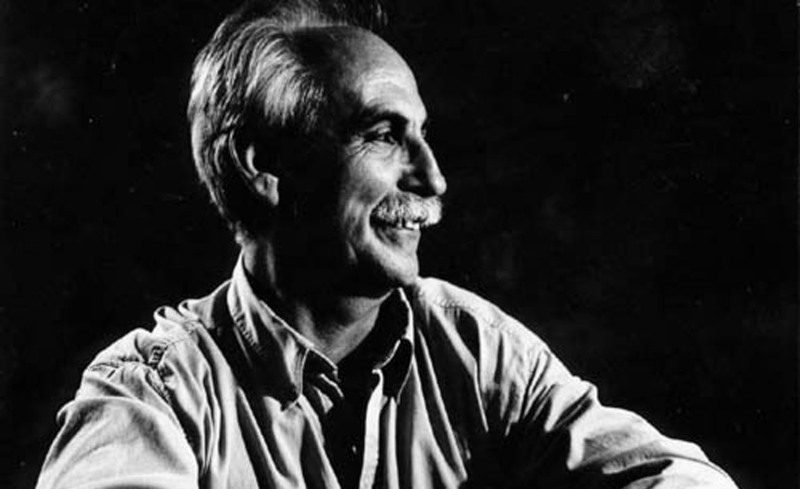El Sindicato de Altavoces: Tribute to Gabriel Brnčić
El Sindicato de Altavoces: Tribute to Gabriel Brnčić
Tuesday, March 21, 2023 at 20h. Sala Aranyó (Campus UPF de Poblenou).

Program
Coro (Andrés Lewin-Richter)
Lyse (Zuriñe Gerenabarrena)
Die Sonne Ensayo1 (Mila von Chobiak/ Fernando Jobke)
Adagio-Scherzo (Gabriel Brncic)
Variaciones (Gabriel Brncic)
Bios
Andrés Lewin-Richter (Miranda de Ebro, 1937) is a composer and engineer. He obtained a Fulbright scholarship that allowed him to complete his studies at Columbia University in New York, where he studied and worked between 1962 and 1965, being assistant to Vladimir Ussachevsky, Mario Davidovsky and Edgar Varèse at Columbia Princeton Electronic Music Center, where he was an assistant professor and created his first electronic compositions. In 1974 he founded with Mestres Quadreny the Phonos Electroacoustic Music Studio. He is a composer specialized, to a greater extent, in electroacoustic music, having composed instrumental works with tape and music for ballet, theatre, film and video.
Zuriñe F. Gerenabarrena studied composition with Carmelo Bernaola and Franco Donatoni. Composed works for orchestra, ensemble, theatre, dance, acousmatics, sound installations and multidisciplinary shows. Artist-in-residence: NOTAM (Oslo), EMS (Stokholm), ZHdk-ICST (Zurich), Shiro-Oni (Japan), Tokyo Wonder Site (Tokio), Studio Alpha, VICC (Visby), USF/Verfet (Bergen), LEC (Lisbon). Professor of Counterpoint, Harmony, Fundamentals of Electronics, and Electronic Composition in the Master of Contemporary Music Creation of MUSIKENE (Conservatory of Music of the Basque Country)
Mila von Chobiak (1971) (AKA Fernando Jobke) has a degree in musical composition (U.N.Q. Buenos Aires), specialized in contemporary music and electroacoustics and has perfected his studies at the Postgraduate of new Compositional techniques (Barcelona Pompeu Fabra)- 2008 and at the Master of sound art (University of Barcelona) - 2022.He has presented his pieces in different festivals and has composed music for plays in addition to developing a parallel career in Performance Art, physical theatre and comedy under the name of Mila von Chobiak (name with which she is currently presented in society). His view on the meat industry stands out in his production from the sound installation "On the inconvenience of having been born" that had the support of OSIC scholarships for research and creation.
Gabriel Brnčić (Santiago de Xile, 1942), studied violin, oboe and music theory at the National Conservatory of Music of Chile and graduated with a degree in Musical Composition from the University of Chile. Scholarship by the Di Tella Institute to carry out the improvement courses in Musical Composition 1966-67 at the Latin American Center for Higher Musical Studies (CLAEM) directed by Alberto Ginastera, Professor of these courses, and later, director of the Laboratorio de Sonido y Música Electroacústica del Centro de Investigaciones en Comunicaciones, Arte y Tecnología de Buenos Aires. In Barcelona he had the opportunity to collaborate in the foundation of the first Laboratory of Electroacoustic Music and School of Contemporary Music in Spain. He was director of this Laboratory, until his own students could take charge of the studio. He directed the courses of Electroacoustic music at the Gabinete de Música Electroacústica at the Cuenca Conservatory. Senior Professor in Composition at Escola Superior de Música de Catalunya (ESMUC) and has directed the Master in Composition and Contemporary Technologies at the Pompeu Fabra University of Barcelona. He has received important awards, including: Casa de las Américas (1966). GMEB Bourges (1984), City of Barcelona (1986), President of the Republic Award, Government of Chile (2014). Member of the Board of Trustees of the Phonos Foundation.
Notes
Coro [A. Lewin-Richter] - 2018
From some samples of recordings of a professional rhapsody for the Music Technology Group, cut and processed through frequency transpositions and microdisplacements, very interesting choral results are obtained that, applied to a multichannel reproduction system, allows to establish the sound in space. The interaction is multiplied, a choir to 8 voices very professional, to this are added amplified explosive initial fragments of the voices that allow in turn to obtain the percussive sounds in the composition.
LYSE [Z. Guerenabarrena]
Acousmatic work for 8 channels. Lyse, which means "bright" in Norwegian, uses the voice as a starting point. High-pitched sounds in different textures interrelate and embrace the listener to immerse them in the sound. It is a piece composed in different layers that allows us to feel listening as if we were in multiple spaces, trying to deepen the attention of the listener and the sentimental relationships that occur under various forms of sound representation. Spatialization in all 8 channels helps create a changing and mobile space, expand the direction of sound and draw listener's curiosity. Work composed at Studio NOTAM (Oslo, Norway), during my residency in 2019.
Die Sonne-Ensayo 1 [M. von Chobiak] - 2004
In this piece the electronic materials merge and mix with processed strings articulating reason, instinct, emotion and body. "Die Sonne - essay 1" - from the German Sonne = Sun -, was composed in the neighborhood of Poble Sec, on Concordia Street on a Pentium III computer in approximately 45 days. Electronic materials were generated from Csound and the strings (which had been recorded in Buenos Aires) were processed in Csound and the program called at the time Cool Edit, where the mixing was also made. Special attention was paid at the time to the spatialization of sound using a plugin created Ad Hoc by Pablo Di Liscia. The piece, whose structure was seriously influenced by the reading of Chapter V "The Sun" from the book "The Development of Light" (Rodney Collin), was selected as the winner of the SGAE 2004 international electroacoustic composition award.
Adagio Scherzo (a Víctor Jara) [G. Brnčić] - 1992
The two movements are being at the same time 'slow and predictable' the adagio and tenaciously active the scherzo. The qualities are invaded and I am at a point called a truncated chant (Victor: An unfinished Song, Juan Jara, 1983). It is a representation through sound, recorded on a quiet day when I found some tapes on my way. (Indeed. Someday when the luminous memories of other times converge with a desire for synthesis. The timing is right and the materials appear to have been coined for decades. The dialectic of the mystical outburst and the consciousness of the reflective actor: a portrait of our distant friend, suspended by the death given to him by a compatriot still unpunished)
Variaciones [G. Brnčić] - 1975
This music is constructed by linear derivation of states of a configuration in a synthesizer. In this case of an unstable configuration of the AKS analog synthesizer, in which and as a theme, there is in memory a sequence of sounds and silences whose composition is similar to that of any other instrumental work of the author. The variations are grouped by gesture, matter and spatiality. Finally, they acquire traits of total transformation of the material and go through conflictive zones of raw sound and notorious manipulation of the synthesizer. Spatialization and kinetic stereophony is achieved in a final four-channel composition process. As an electroacoustic work, it starts from an instrumental concept of the synthesizer, considering its automatisms, qualities of self-control and elaboration, within a global structure subject to interpretation: that of the composer himself. This approach to composition with current technology, much more feasible through computer scores treated in real time, discards the procedure of assembly, successive elaboration, juxtaposition and imbrication of materials. Therefore the sounds themselves, in this work, are those of the instrument with complete evidence and it is intended nothing more than to organize them in a formal flow whose partialities we call variations.
Supported by:

